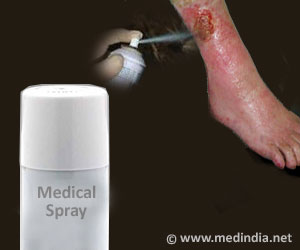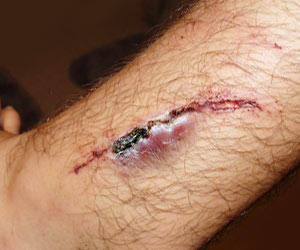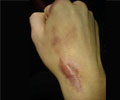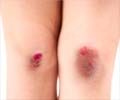Transcutaneous oximetry test developed by scientists may be able to predict patients who are most likely to experience wound-healing complications.

Soft tissue sarcomas are cancers that originate in the soft tissues, such as muscles, fat, blood vessels, nerves and tendons. External beam radiation typically is part of the treatment regimen. Patients often do better, and require less radiation, when radiation is administered before surgery. But administering radiation before surgery also increases the risk of wound-healing complications.
Transcutaneous oximetry is a noninvasive test that measures the oxygen level of tissue beneath the skin. Adhesive sensors are placed on the skin; the sensors contain electrodes that can sense oxygen. The test causes no side effects or discomfort to the patient.The study followed ten patients who underwent surgery for soft tissue sarcomas after receiving radiation treatment. Patients with lower transcutaneous oxygen levels before surgery were more likely to experience wound complications. Four of the seven patients who had levels lower than 25 mm Hg just before surgery experienced wound complications, while all three patients with oxygen levels higher than 25 mm Hg healed without difficulty.
Dr. Nystrom noted that the study population is small, and further work is necessary to confirm the findings. If confirmed by further study, transcutaneous oximetry potentially could become a tool to predict which patients are most at risk for wound complications. Extra precautions then could be taken to prevent complications, such as increasing the time interval between radiation and surgery and performing additional tissue transfers and vacuum-assisted closure, Dr. Nystrom said.
The study was performed at the University of Iowa Hospitals & Clinics, where Dr. Nystrom did his residency. The co-author is Benjamin Miller, MD of the University of Iowa.
"Transcutaneous oximetry represents a potential tool for decisions regarding surgical timing or potentially other medical and surgical efforts to diminish wound complications," Drs. Nystrom and Miller concluded. "However, given this small sample size, more data is needed to further assess the relationship."
Advertisement
Source-Eurekalert













